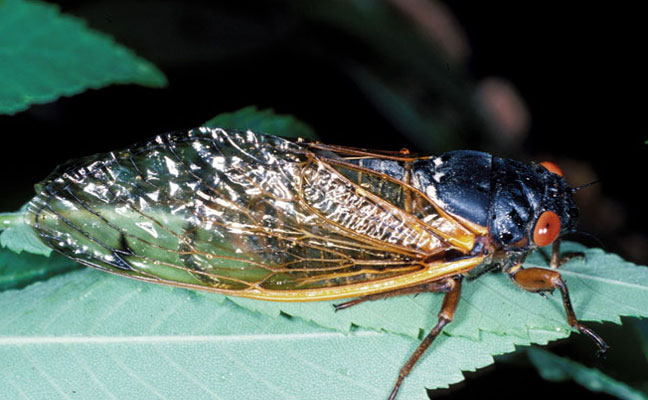If you live in an area in which Brood X cicadas are expected to emerge after 17 years underground, you may receive calls from frantic customers asking for treatments to eliminate them from their homes and yards.

Photo: Lacy L. Hyche, Auburn University, Bugwood.org
Cicadas are not considered a pest, however, so there’s no need to treat for them. Although they may find their way into structures, they are not skilled fliers so they should be easy to capture and taken outdoors. Put your customer’s fears to rest with these facts:
- The X in the name Brood X cicadas stands for Roman numeral 10.
- Brood X is a periodical cicada (Magicicada spp.) that emerges every 17 years.
- Periodical cicadas are found only in North America in the states of Delaware, Georgia, Illinois, Indiana, Kentucky, Maryland, Minnesota, New Jersey, New York, North Carolina, Ohio, Pennsylvania, Tennessee, Virginia and West Virginia, as well as Washington, D.C.
- Three 17-year species of cicadas exist — M. septendecim, M. cassini and M. septendecula — and all three will emerge this year.
- Periodical cicadas are divided into three groups of species (-decim, -cassini and -decula), which are distinguished by slight ecological differences.
- Cicada species can be identified by the sounds they make, as the sound is almost always species-specific.
- Periodical cicadas are not locusts. They may be called “17-year locusts,” which is a misnomer because locusts are a type of grasshopper.
- Populations of periodical cicadas are higher than other cicada species. Hundreds of thousands per acre are common, although they may be as high as 1.5 million per acre.
- Periodical cicadas make a tasty snack for spiders, birds, snakes and even dogs.
- Because populations of Magicicada are so high, predators are unable to make a significant dent.
- Cicadas are not poisonous and do not transmit disease.
- Cicadas do not sting or bite.
- Cicadas will fly away when approached.
- Periodical cicadas do not have special defense mechanisms. Their ovipositor is used only for laying eggs, and their mouthparts are used only for feeding on branches.
- Periodical cicadas undergo five juvenile stages while underground, and feed on root fluids.
- Cicadas emerge from underground when soil temperatures are relatively warm.
- Brood X cicada nymphs lived underground for 17 years. A few weeks before they emerge, they plan their escape by making exit tunnels with holes at the surface that are about a half-inch in diameter.
- Adult cicadas are mostly white after they molt, and then get darker as their exoskeleton hardens.
- Brood X cicadas have black bodies, red eyes and wings with orange veining.
- It takes about four to six days, longer when temperatures are cooler, for a cicada’s exoskeleton to completely harden. They complete this maturation period before they adopt adult behavior.
- Adult male cicadas produce species-specific “songs” and form “choruses” to attract female cicadas. Male cicadas alternate “singing” with short flights until they find their female cicada mates.
- Cicadas that emerge from the ground will shed their shells and develop wings. They will then seek out fresh hardwood on trees and shrubs.
- Female cicadas will land on a tree or shrub, mate, and lay from 400 to 600 eggs at the ends of the branches.
- Cicada eggs will hatch after about six weeks.
- When cicadas hatch, they will chew through the tips of the branches to make them fall off and drop to the soil. The newly hatched cicadas will burrow about two feet underground and remain there for the next 17 years.
- Brood X will next emerge in 2038.
Sources: University of Connecticut and The Nature Conservancy
Want to help track Brood X cicadas? Check out apps such as Cicada Safari and iNaturalist, which will help determine whether their location changed since they last emerged 17 years ago.
Feeling adventurous and, uh, hungry? Check out these recipes that feature cicadas as a main ingredient, courtesy of CNET.
To mark the emergence of Brood X cicadas, here’s a Top 25 ranking of pop culture insects from The Ringer.
The post Brood X cicadas exposed appeared first on Pest Management Professional.
source https://www.mypmp.net/2021/05/25/brood-x-cicadas-exposed/
No comments:
Post a Comment